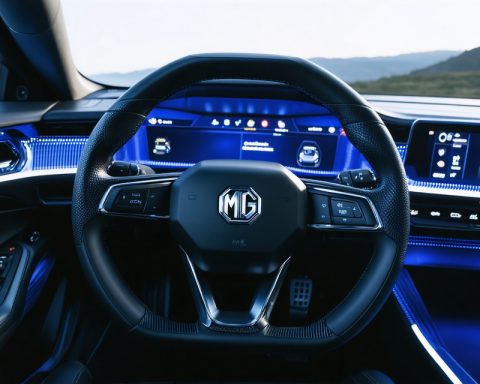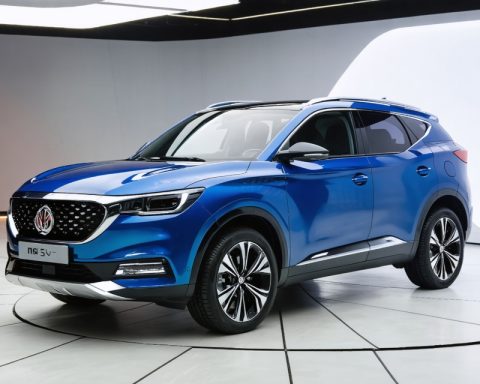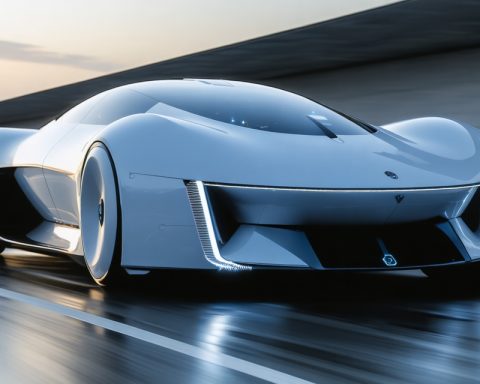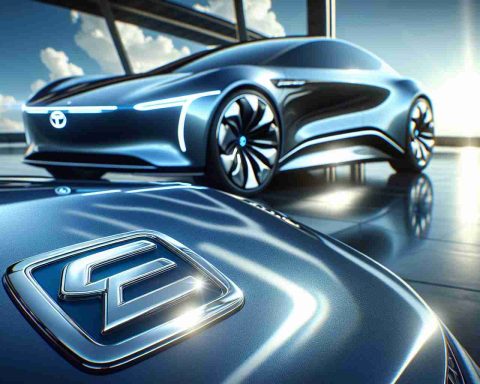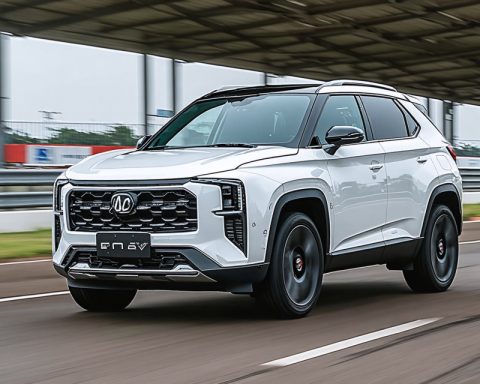- BYD reached a milestone of 40,000 electric vehicle sales in Australia in under three years, outpacing Tesla’s decade-long record at the same mark.
- The Atto 3, a compact SUV, and other models like the Dolphin, Seal, and Shark 6 are central to the brand’s rapid growth.
- BYD plans to launch its luxury Denza brand in Australia, focusing on direct consumer engagement without intermediaries like EVDirect.
- The company’s strategy emphasizes momentum and innovation, aiming to transform the Australian auto market through electrification.
- BYD aspires to surpass 40,000 sales in a single year by 2025, aligning itself against significant competitors like Tesla.
Beneath the vast skies and sweeping plains of Australia, an automotive revolution revs up with electrifying momentum. BYD, the dynamic force from China, has ignited the roads Down Under, celebrating a meteoric milestone—40,000 cars sold in just under three years. At the heart of this success story unfolds a saga of strategic agility and timely innovation, setting the stage where dreams ton electric can no longer remain overlooked.
In the austere landscape of electric vehicles, the feat BYD has pulled off becomes even more compelling when viewed against the backdrop of Tesla’s decade-long journey to a similar sales milestone. Where Tesla, the reigning czar of electric mobility, took nearly ten years to achieve 40,000 sales across Australia, BYD, buoyed by a savvy blend of strategic offerings and an emblematic brand rediscovery with EVDirect, has blitzed this accomplishment by introducing models like the Atto 3, which hit the markets in 2022.
The Atto 3, with its compact muscular silhouette, embodies a small SUV that reflects the quintessential Australian lifestyle, finding favor amid the sun-drenched contours of the continent. Yet, it’s not the only star in BYD’s growing constellation. Models like the Dolphin, Seal, and the eagerly toasted Shark 6 plug-in ute fortify its lineup, appealing to consumers eager for novelty and efficiency blended seamlessly. The Shark 6, launched in stride with a vision for sustainable utility, appears poised to challenge established legends like the Ford Ranger, marking a promising uptick in sales and perpetuating BYD’s upward trajectory.
Marching beyond mere electric vehicle sales, BYD plans to ripple across Australia’s auto landscape with the introduction of its luxurious Denza brand. This anticipated debut promises refined class sans intervention from distributors like EVDirect, directly engaging with consumers looking for opulence interwoven with cutting-edge electric technology.
The aspirations of BYD coalesce around one key message—momentum drives success. With each vehicle that hits the road, the brand not only captures the market but progressively transforms it, one electric mile at a time. As wheels roll and engines hum across Australia, the scene comes alive with a vivid narrative: in the story of energy transition, BYD writes its own chapter steeped in ingenuity and vibrant possibility.
As the calendar flips to 2025, the challenge to surpass 40,000 sales in a single year looms large, yet it seems an achievable target rather than a distant dream. Whether it will match or even outshine Tesla’s 45,000 vehicles sold during its golden year remains to be seen. However, one thing is certain—BYD’s journey has just begun, promising an evolving adventure on the highways of automation driven by electrification.
Why Australia’s Love for BYD Electric Cars is Surging: A Deep Dive
Introduction
In recent years, BYD Auto, a prominent Chinese electric vehicle (EV) manufacturer, has made a dramatic impact on the Australian automotive market. With 40,000 vehicles sold in just three years, BYD’s rise juxtaposes Tesla’s decade-long journey to a similar milestone, highlighting a shift in consumer preferences and market dynamics.
Market Trends & Forecasts
Electric Vehicle Adoption: Australia’s EV market is rapidly expanding. According to the Australian Electric Vehicle Council, EV sales have been doubling annually, driven by government incentives and growing environmental awareness.
BYD’s Competitive Edge: BYD’s accelerated growth is attributed to its value proposition—offering affordable yet feature-rich EVs, crucial for penetrating the price-sensitive markets in Australia.
Models and Offerings
1. BYD Atto 3:
– Features: Smart design tailored to urban and suburban settings, targeting young families and professionals.
– Demerits: Limited availability of charging infrastructure in certain areas can pose challenges for potential buyers.
2. Other Notable Models:
– Dolphin & Seal: These models cater to a range of customer preferences, from compact city cars to more spacious family vehicles.
– Shark 6: A versatile plug-in ute designed for durability, aiming to capture the interests of utility vehicle enthusiasts.
Reviews & Comparisons
Consumer Feedback: Overall, BYD’s EVs receive positive reviews for their affordability, innovative features, and performance. However, customers often note limited dealer networks and service centers as areas of concern.
Controversies & Limitations
Despite the success, BYD faces challenges:
– After-Sales Support: As a relatively new entrant, BYD is working to establish a robust after-sales network to reassure potential buyers.
– Brand Recognition: While growing, BYD’s brand recognition still lags behind established players like Tesla.
Security & Sustainability
Sustainability Efforts: BYD’s commitment to sustainability is demonstrated through its entire vertical integration—from battery production to vehicle manufacturing—ensuring minimal environmental impact.
Battery Technology: Leveraging its expertise in battery manufacturing, BYD employs cutting-edge technologies to enhance range and battery life, offering a competitive edge.
Pros & Cons Overview
Pros:
– Affordable pricing
– Comprehensive range of models
– Strong focus on sustainability
Cons:
– Need for expanded charging infrastructure
– Limited brand presence compared to competitors
Pressing Questions & Answers
Q: What makes BYD a strong competitor in the EV market?
A: BYD’s strategic pricing, robust lineup, and rapid innovation position it well against traditional auto manufacturers and newer EV companies.
Q: How is BYD impacting the Australian market specifically?
A: BYD is reshaping the Australian EV scene by making electric vehicles more accessible and appealing to a broader audience.
Actionable Recommendations
For potential buyers and electric vehicle enthusiasts:
– Stay Informed: Actively research and compare EV options to determine the best fit for your needs.
– Plan Infrastructure: Consider the availability of charging stations in your region before purchasing.
– Explore Incentives: Investigate government grants or incentives that may apply to EV purchases in your area.
Conclusion
BYD’s journey in the Australian market underscores the growing demand for electric vehicles as consumers seek sustainable, innovative solutions. With continued strategic expansion and adaptation to local needs, BYD is poised to further solidify its presence and drive change in the automotive landscape.
For more information, visit BYD and explore their diverse range of electric vehicles.

